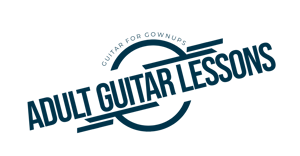As guitar players, we all become reliant on tuning our guitars using the handy electronic tuner. It’s just easier and more convenient.
But as with many “conveniences”, it comes with a price. And that price is the reduced ability to train our ears to “hear” when the guitar is in proper pitch – the old fashioned way.
Most beginning guitarists learn the method of tuning the guitar manually by playing the note on the 5th fret of each string (4th fret on the 3rd string), to use as a reference point to tune the adjacent higher string.
This is a great way to tune the guitar by ear and will work every time. Often overlooked, however, is another way to tune manually, and that is by using the “octaves” to get you strings to the right pitch.
Without getting deep into a music theory discussion, an octave occurs when you start on one note and play through a series of notes or a scale, and you reach the same note as the original – only in a higher or lower range.
Tuning with octaves works the same as the above mentioned manual tuning method, but instead of tuning the string using a reference note that is in “unison”, you will use a reference note that is an octave above the string to be tuned.
Start by getting the first string (E) in proper pitch. Use a tuner, pitch pipe, piano, or another guitar as a reference. Then play the note on the 7th fret of the 1st string (B).
This is the octave of the 2nd string, and you can tune the 2nd string to match the pitch of the note you are playing on the 7th fret of the 1st string.
Once the 2nd string is in tune, play the note on the 8th fret of the 2nd string (G) and adjust the 3rd string (G), to match it.
Then play the note on the 7th fret of the 3rd (D) string and adjust the 4th string (D) to match it.
Then play the note on the 7th fret of the 4th string (A), and adjust the 5th string (A), to match it.
Then play the note on the 7th fret of the 5th string (E), and adjust the 6th string (E) to match it.
The following chart should help to visualize the process.
E————————7—————
B—————————8————
G————————7—————
D————————7—————
A————————7—————
E—————————————–
Notice that in all but the 2nd (B) string, the 7th fret is the octave of the adjacent lower string.
I will be the first to admit an over reliance on the electronic tuner. The convenience factor is undeniable.
But there are times that come along when the batteries in your tuner will be dead, or in the middle of a gig when plugging into a tuner just isn’t “convenient”. It’s during those times that a good understanding of how to tune your guitar by ear – the old fashioned way – will be invaluable.



